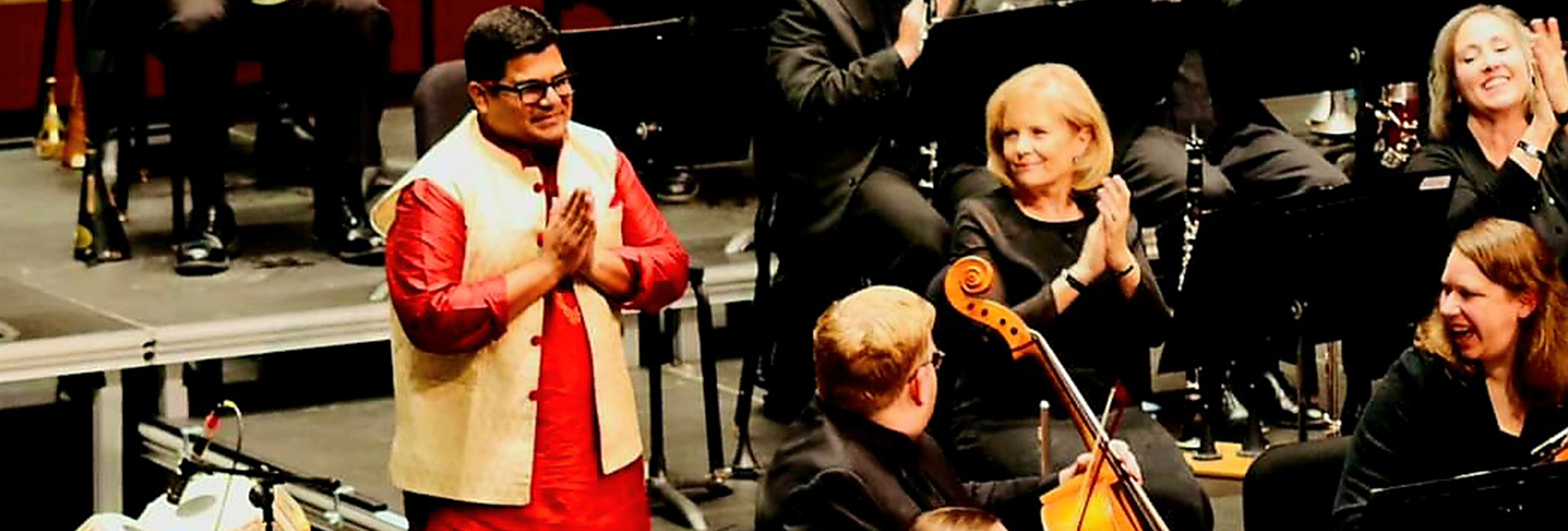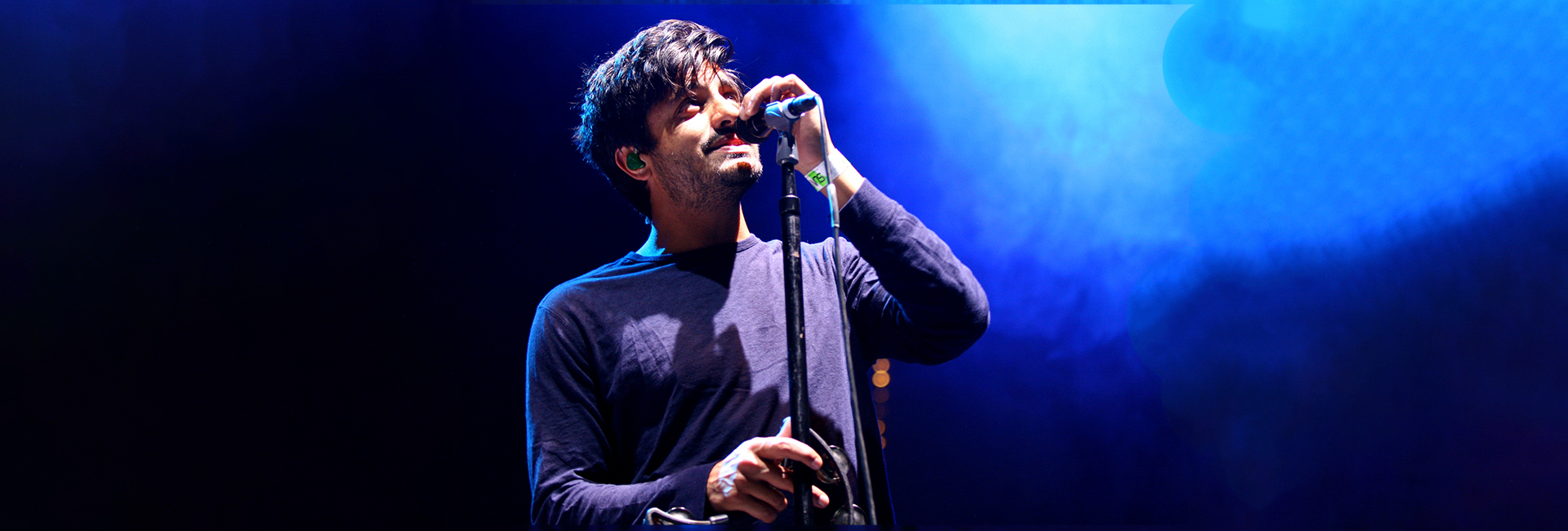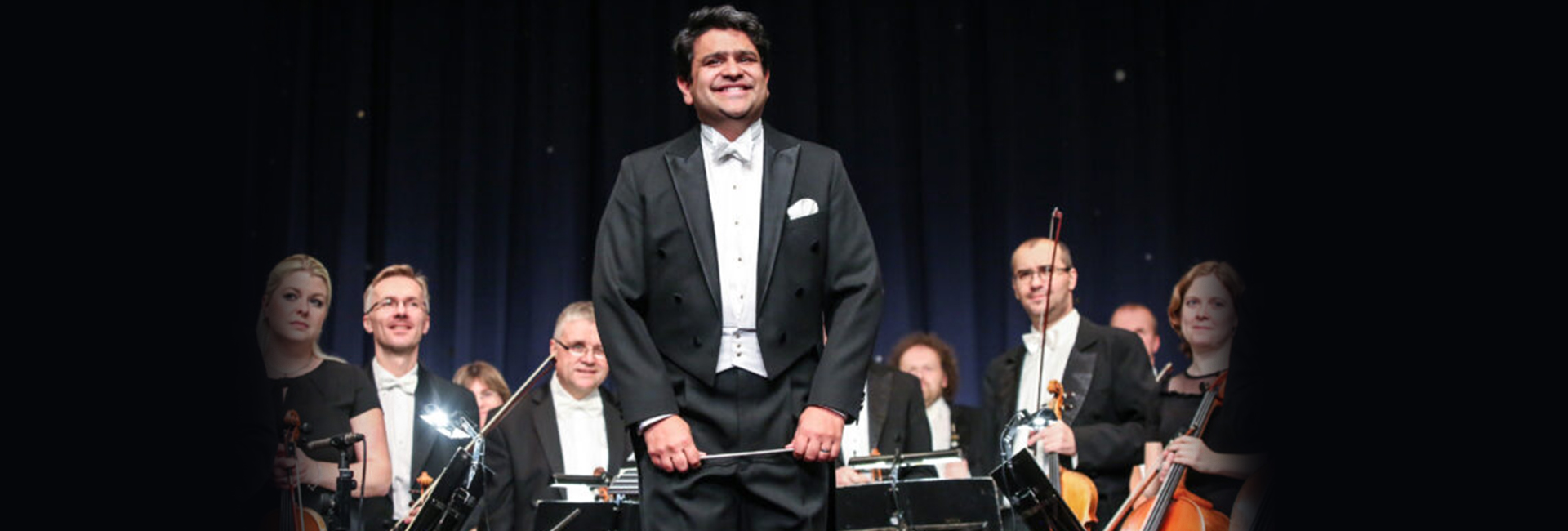(January 8, 2023) “Learning tabla from such a young age made me so good at Maths that I became an engineer,” tabla player Sutanu Sur joked, as he did a demonstration with the instrument before joining the Fox Valley Symphony Orchestra in concert. Sutanu has been living in Fox Valley, in Wisconsin, USA, for nearly a decade and learning the tabla for well over three, part of a small but thriving Indian diaspora a few hours North of Chicago. His audience that night was almost completely American and many were seeing a tabla for the first time.
Sutanu, a software engineer by profession, performs whenever he gets the chance, he is keen to have a proactive role in taking Indian music to the world. Although Indian music culture is well-showcased in the larger cities, the same cannot be said of the smaller suburban towns, where the diaspora is notably smaller. “Indian classical music concerts happen in the big cities. I live three hours from Chicago, in a town where everything is available, including a prestigious concert hall. But there is hardly any focus on Indian music,” Sutanu tells Global Indian.

Sutanu Sur
Sutanu is determined to do his bit, performing as much as he can, talking about his craft and speaking to the media. The Indian diaspora in this little corner of American suburbia is small but active – in 2010, they even built the region’s first Hindu temple, there is a Sikh temple and the nearest Bengali Association (Bengali Cultural Society of Milwaukee) that hosts its Durga Puja celebrations every year is two hours away.
Performing with the Fox Valley Symphony Orchestra
Last year, the internationally renowned conductor and pedagogue, Dr Kevin Sütterlin, who had become the Fox Valley Symphony Orchestra conductor, decided on a more multicultural theme for their concert in October 2022. He picked a piece by Reena Esmail, whose compositions are rooted in Indian classical music traditions and fused with Western music and instruments. The piece, however, needed a tabla player.
“Kevin considers himself a global citizen and is interested in different cultures and forms of music,” Sutanu says, as he recalls how this collaboration happened. “He chose the Esmail piece because he wanted to show a blend of cultures. They decided to include the tabla section without knowing how hard it would be to find a tabla player.” By then, Sutanu had performed in several concerts in the area and Sütterlin tracked him down. “It was the first time I received the scores of a composition,” Sutanu smiles.
The concept was so novel to the audience that Sutanu had to start out with a demonstration. What’s more, the orchestra had managed only three rehearsals with their tabla player. “They are world class musicians who could adapt to the different kinds of compositions and the nature of the instrument,” Sutanu explains.
Early talent
Growing up in a suburb some 50 kilometres outside Kolkata, Sutanu showed an interest in the tabla in his family home from a very young age. His parents noticed and fixed up lessons with a teacher. He learned for 12 years, under Pandit Sukumar Moitra. He performed even as a child, taking part in competitions and winning nearly all of them. “The tabla was my main focus then. I was doing my riyaz for six to eight hours a day.” Even his academics became second priority, until class 10. “I was really good at Maths and got into Jadavpur University,” Sutanu says. “I studied engineering and continued to play the tabla.”
When Sutanu moved out to Fox Valley to work, around a decade ago, there weren’t too many Indians around. “Nobody really focused on presenting Indian culture to the community,” he says. He began performing with IndUS of Fox Valley organization, which is dedicated to promoting Indian culture. “I have been performing there for the last seven years,” he says.
A tabla player joining a symphony orchestra is rare and Sutanu takes pride in it, “as an Indian,” he says. “The audience was surprised to learn all the nuances of the tabla. The only way to promote something to is to get people to learn about it,” he says.
An ambassador of India’s soft power
Sutanu continues to train, now with Pandit Swapan Choudhury, who has launched a digital library of resources for tabla players around the world. “Music has its own language, it’s a great way to communicate,” Sutanu says. “I have never played alongside a clarinet before and I don’t think Dr Bruce Danz has played any Indian songs before. But he was adapting and so was I, it’s a communication that happens through music. That’s why it plays such an immense role in connecting people and cultures from around the globe.”





I have heard him perform tabla live and online . Sutanu definitely has special talent that he has used to touch hearts of everyone he comes across.
Great going Sutanu…! It’s always a pleasure to hear you playing Tabla.